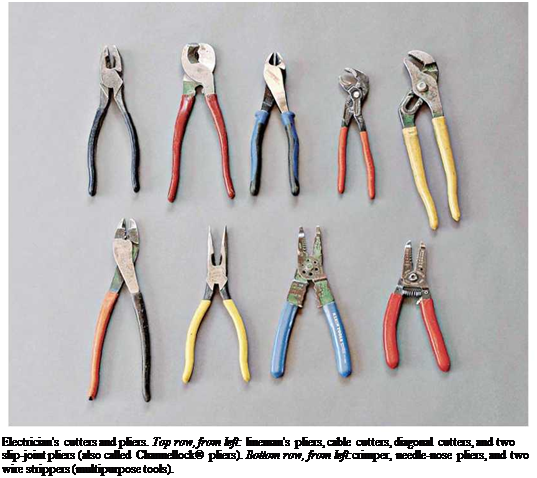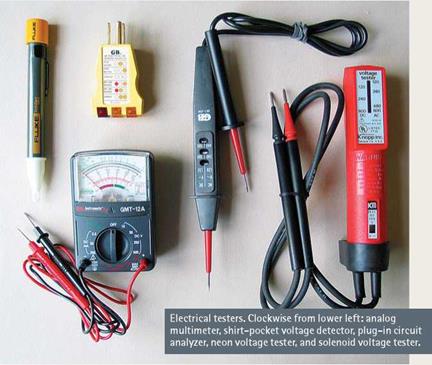Choosing an Electrical Tester
Testing to see if an outlet is energized is so critical to professional electricians that there are scores of specialized testers to choose from, some of which cost hundreds of dollars. Fortunately, amateur electricians can get a reliable tester for less than $30. Here are five types:
► Neon voltage testers are inexpensive and versatile. Insert the probes (prongs) into the receptacle slots or touch them to the screw terminals or to a metal outlet box to see if the unit is hot (energized). Buy quality: Better neon testers have insulated handles, whereas cheapies have bare metal probes so short that you risk shocking yourself when using them.
► Plug-in circuit analyzers can be used only with three-hole receptacles, but they quickly tell you if a circuit is correctly grounded and, if not, what the problem is. Different light combinations on the tester indicate various wiring problems, such as no ground, hot and neutral reversed, and so on. Quite handy for quick home inspections.
► Shirt-pocket voltage detectors give a reading without directly touching a conductor. Touch the tool’s tip to an outlet, a fixture screw, or an electrical cord, and the tip glows red if there’s voltage present. Because they depend on battery power, voltage detectors are somewhat less reliable than other options, but all in all, it’s an ingenious tool.
► Solenoid voltage testers (often called "Wiggy’s") test polarity, AC, and DC voltage from 100 volts to 600 volts. Most models vibrate and light a bulb when current is present. Solenoid testers don’t use batteries, so readings can’t be compromised by low battery power. However, because of their low impedance, solenoid testers will trip GFCIs.
► Multimeters, as the name suggests, offer precise readings in multiple scales, which you select beforehand, although some models are autoranging (they select the correct scale). Extremely sensitive, they can detect minuscule amounts of current. Better models test AC and DC voltage, resistance, capacitance, and frequency.
|
|








Leave a reply